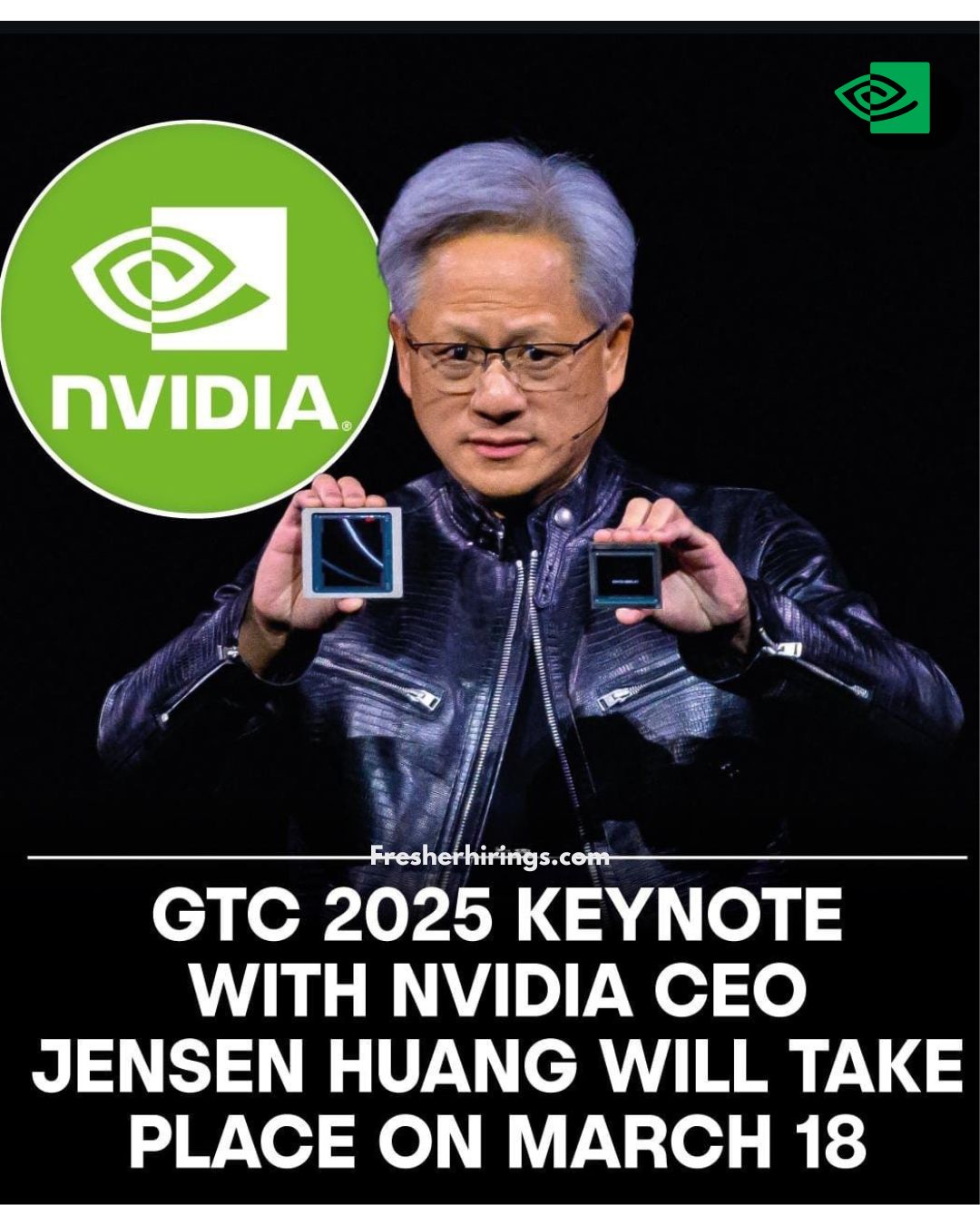NVIDIA GTC 2025: Blackwell AI Superchip, Project GROOT, and Earth-2 Unveiled. NVIDIA’s long-awaited GTC 2025 theme, led by CEO Jensen Huang on March 18, talked about innovative progress in AI, robotics, and climate modeling. In 2025, the conference hardened NVIDIA’s position as a developing leader in AI computing, to exhibit innovations that will transform sectors globally. Here’s a breakdown of the important announcements:
Join the Telegram Channel: Join Now!
NVIDIA GTC 2025: Blackwell
Blackwell: The AI Superchip Revolutionizing Computing
The presentation of NVIDIA’s next-generation AI super chip, Blackwell, was one of the keynote’s most memorable moments. Blackwell offers cost and energy efficiency improvements of up to 25 times over its predecessors, designed to push the limits of AI performance. From large language models (LLMs) to autonomous systems, this performance boost is expected to accelerate AI model training and inference.
Key Features of Blackwell:
- Unmatched energy efficiency for AI workloads
- Scalable architecture to support next-gen generative AI applications
- made for deep learning, which makes it a game-changer for businesses that require a lot of AI computation.
NVIDIA’s goal with Blackwell is to make high-performance computing more accessible to businesses and researchers by reducing the cost of AI training and inference.
Project GROOT: The Future of Humanoid Robots
Another groundbreaking revelation was Project GROOT, NVIDIA’s new foundation model designed for humanoid robot learning. Unlike traditional AI models that rely solely on pre-programmed instructions, GROOT enables robots to learn in both simulated environments and the real world.
Why Project GROOT Matters
- It provides robots with general intelligence, allowing them to know and adapt to different environments.
- Increases speed the training of humanoid robots using AI-powered simulations.
- Bridges the gap between robotics and AI, paving the way for smarter, more autonomous machines.
With this innovation, NVIDIA is setting the stage for a future where robots can learn difficult problems independently, making them invaluable in sectors such as healthcare, manufacturing, and logistics.
Earth-2: NVIDIA’s Digital Twin for Climate Prediction
NVIDIA also introduced Earth-2, a powerful AI-driven digital twin of the Earth. Earth-2 uses deep learning and high-performance computing to create detailed climate models that are intended to predict extreme weather patterns.
Earth-2’s Impact on Climate Science
- Uses AI-powered simulations to improve weather forecasting accuracy.
- It helps governments and industries prepare for natural disasters more effectively.
- Provides a practical, high-resolution climate model for researchers studying global warming and extreme weather.
By harnessing AI to enhance climate predictions, NVIDIA is contributing to a more sustainable future, helping scientists and policymakers make data-driven decisions to combat climate change.
Showcasing AI-Powered Robotics
NVIDIA’s presentation of cutting-edge robotics powered by NVIDIA AI was one of the GTC 2025 highlights in terms of visual appeal. A Disney Research robot that looked such a WALL-E was one of the highlights, which made people curious about how AI-powered robots could be used for entertainment, research, and everyday assistance.
- NVIDIA-Powered Robotics Highlights
- Robots are designed for industrial automation.
- AI-driven machines for healthcare and service industries.
- Advanced humanoid robots learn through Project GROOT’s AI models.
This showcase highlights the growing influence of robotics and AI convergence, setting the stage for smarter, more efficient robotic systems.
Join the Conference: Click Here!
Conclusion: NVIDIA’s AI-Powered Future
NVIDIA’s GTC 2025 keynote reaffirms the company’s commitment to AI innovation. NVIDIA is pushing the boundaries of what’s possible in AI and computing, from the energy-efficient Blackwell super chip to the intelligent humanoid robots of Project GROOT and climate modeling with Earth-2.

